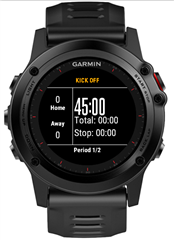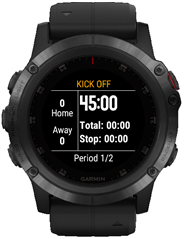I have seen some threads about this but I still don't fully understand. My next task is to do something about the graphics of my app. I try to get it working on anything from FR230/Fenix3 all the way to FR965.
I'm using the Graphics.FONT_NUMBER_MEDIUM because the large text font simply isn't large enough. But this number font is different on different devices. Up until now, i have placed everything in a layout.xml (simply because the tutorial I started with used this). I got it somewhat goodlooking on my Fenix5Xplus, but when I looked at some other watches, it looked wrong. Below are some snippets from Fenix3, Fenix5XPlus and FR965.



Should I leave layouts.xml and strictly calculate every postion? But how? I know about TEXT_JUSTIFY_VCENTER but on some devices there are (different) spacing on the top and bottom. So dc.getFontHeight() may or may not include spacing.
How do people do this? Special case for each device? All I want is for the three rows to fit within my two horizontal lines without interfering with each other...




